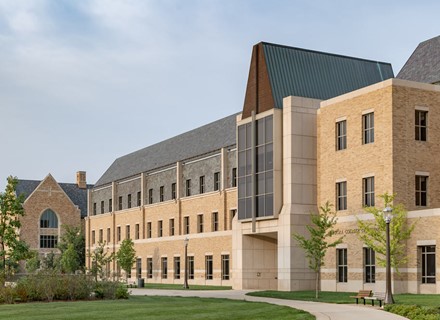I am pleased to announce the rollout of the comprehensive restructuring of our graduate programs organizational structure, which involves about 80 staff members in the College who serve in our graduate programs. You can view the new organizational chart here. Transition has already begun with the expectation of being fully integrated as of July 1.
The guiding principles for this integrated “matrix” model are threefold:
- To elevate all of our graduate programs through increased strategic clarity and focus on the full student journey particular to each program.
- To increase the intersection of functions (such as admissions, student services and operations, and career services) and academic programs, in order to enhance connectedness and cooperation among staff – across programs by function and across functions by program – and increase interaction between faculty and staff serving the same program.
- To support academic and functional excellence through developing specialization by program and providing opportunities for staff development.
Since last fall, Kara Palmer and associate deans Mike Mannor, Walt Clements and Kristen Collett-Schmitt have devoted considerable time and effort to meet with graduate program staff as well as academic and program leadership. They also conducted focus groups and one-on-one conversations to gather valuable input that helped to shape the resulting organizational structure.
I encourage you to review the chart to become familiar with your colleagues’ new positions and roles. We found a spot for all staff members, where some are taking on new roles and responsibilities. There also are a number of open positions, which we cannot fill at the present due to the University freeze on staff hiring. When the freeze is lifted, these positions will be opened first to internal candidates to provide career advancement opportunities for Mendoza staff members.
There are a number of important details still to be arranged, including space considerations, budget allocations/R&Es (Revenues and Expenses) by academic program, and the creation of new position descriptions. Kara, the associate deans and program directors will continue to work through these remaining steps.
The scope of this restructure is significant across the College. As we have seen especially in these past months, being flexible, innovative and responsive to change is absolutely critical to Mendoza’s future as a business school committed to developing servant leaders who contribute to human flourishing.
I’m thankful to the many of you who provided candid feedback and asked hard questions during the planning process. I especially want to thank Kara and the associate deans for their diligence and commitment to the well-being of our staff and the excellence of our programs.
While we do not anticipate having to undertake further changes of this scale, we most likely will need to make adjustments as priorities change and new opportunities arise. Engaging in an ongoing dialogue with staff and academic leadership is of paramount importance to understanding where these adjustments need to be made and to working together to adjust along the way. Please contact me, Kara, the associate deans, the academic directors or program directors with any concerns, suggestions or feedback.
In Notre Dame,
Martijn





